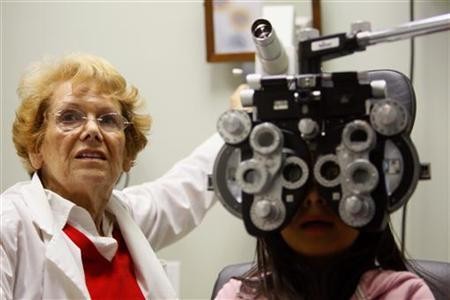Findings of a new study reveal that more playtime outdoors could benefit children's eyesight and help to avoid later developing the vision problem myopia. Scientists have discovered that some blend of genetic factors and childhood activities result in nearsightedness. The latter could include not getting enough sunlight and physical activity outside, and doing too much "close work" reading books and computer screens.
Scientists are not entirely certain what causes myopia. The public often blames indoor activities such as reading books or computer displays, while some scientific studies point to genetic risks.
The study's research team wanted to focus on the effects of kids spending more time outside. A total 1,900 first graders (aged 6 or 7) in 12 schools participated in the three-year study.
Half of the schools gave students one extra recess period for the entire school year. The other half did not.
Three years afterwards, almost 40 percent of the students in the control group had a myopia rate of 40 percent. The figure was just 30 percent for the students with the extra outdoor playtime, according to NBC News.
The lead author was Dr. Mingguang from the Zhongshan Ophthalmic Center in Guangzhou, China. His team had expected a more drastic difference.
The drop in myopia cases was 9.1. That was a 23 percent relative decrease over three years.
However, Dr. Mingguang explained that the results were still promising. That is because preventing early myopia can in turn prevent "pathological" (severe) myopia.
The researchers believe that the powerful combination of physical activity and sunlight can help to protect kids' vision. It is unlikely just reading computers or books less, or exercising do that.
In a past study conducted by Taiwanese researchers, extending recess time from 40 to 80 minutes for one school year resulted in myopia cases being halved. The study was published in the Journal of the American Medical Association (JAMA).
About 40 percent of Asia's population suffers from myopia, while the figure is 30 percent in the United States.
Myopia is the most common vision problem worldwide. It affects 1.45 billion people, and that figure is projected to surge to one-third of the world's present population by 2020, according to Newsweek.
This video explains what myopia is:



























